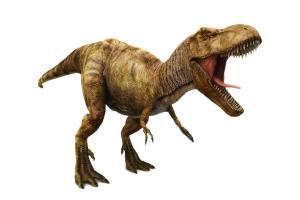The study also found that secretory tissues of these Cretaceous flowers are similar in structure to those of their modern descendants. That suggests modern and ancient flowers of the same lineages produced similar essences

Washington: The flower-based compounds behind the perfumes and colognes you enjoy have been eliciting olfactory excitement since dinosaurs walked the Earth, a study has found.
ADVERTISEMENT
Researchers at Oregon State University in the US found evidence that floral scents originated in primitive flowers as far back as 100 million years ago as pollinator attractants.
They still play the role even though today's flowers also have colourful petals for luring pollinators, according to the study published in the journal Historical Biology. "I bet some of the dinosaurs could have detected the scents of these early flowers," said George Poinar, an entomologist at Oregon State University.
"In fact, floral essences from these early flowers could even have attracted these giant reptiles," said Poinar.
The researchers examined amber flowers from Myanmar, including the now extinct glandular laurel flower (Cascolaurus burmensis) and veined starflower (Tropidogyne pentaptera).
The research revealed that the flower-based chemical compounds that are the basis for the perfumes and colognes we use today have been providing olfactory excitement to pollinating insects and other animals since the mid-Cretaceous Period. Without colourful petals, flowers from that period had to rely solely on scents to attract pollinators. "You can't detect scents or analyse the chemical components of fossil flowers, but you can find the tissues responsible for the scents," said Poinar.
The study also found that secretory tissues of these Cretaceous flowers are similar in structure to those of their modern descendants. That suggests modern and ancient flowers of the same lineages produced similar essences. Some of flowers studied were even in the process of emitting compounds at the time they were engulfed by the tree resin that later became amber.
The study also included a milkweed flower (Discoflorus neotropicus) and an acacia flower (Senegalia eocaribbeansis) in 20- to 30-million-year-old Dominican Republic amber. The anther glands on the fossil acacia flower were especially attractive to bees, one of which was fossilized while visiting the stamens. Today, honeybees are still visiting acacia flowers that have the same type of flora glands that existed in the ancient past.
Catch up on all the latest Crime, National, International and Hatke news here. Also download the new mid-day Android and iOS apps to get latest updates
This story has been sourced from a third party syndicated feed, agencies. Mid-day accepts no responsibility or liability for its dependability, trustworthiness, reliability and data of the text. Mid-day management/mid-day.com reserves the sole right to alter, delete or remove (without notice) the content in its absolute discretion for any reason whatsoever
 Subscribe today by clicking the link and stay updated with the latest news!" Click here!
Subscribe today by clicking the link and stay updated with the latest news!" Click here!






